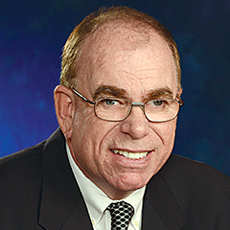
Yes, it’s 2018. Health conditions that once terrified the nation have become mere afterthoughts. We may be on the cusp of private-sector space travel. It’s now possible to buy a Big Mac in Manhattan that tastes exactly like one in San Diego.
Who says we’re not making progress?
Yet there are two niggling challenges that continue to stay up way past their bed times. Here’s the first, in the form of a question: Why can’t we find a way to make roads that do not fall apart after a typical winter? Look, I get it: cold, ice and snow can do a real number on roads. But c’mon already. Cars have been with us for more than a century. In that time, we’ve licked problems that were far more complex and difficult. There’s simply no excuse for roads north of the Mason Dixon Line to be so vulnerable to decrepitude each and every spring. If we can develop materials that allow man-made objects to safely enter the Earth’s atmosphere, surely we can develop sturdier driving surfaces. Just one man’s opinion.
The other problem we should have made more progress on is this: falls among the elderly. Yet this second inexcusable problem not only persists; it may be getting worse.
For example, falls cause more than 90% of hip fractures, with most of these taking place in people who are 70 or older.
Here are some additional facts, courtesy of the Centers for Disease Control and Prevention:
- One in four Americans aged 65 or more years falls every year.
- Every 11 seconds, an older adult is treated in the emergency room for a fall; every 19 minutes, an older adult dies from a fall.
- Falls result in more than 2.8 million injuries treated in emergency departments annually, including more than 800,000 hospitalizations and more than 27,000 deaths.
- In 2014, the total cost of fall injuries was $31 billion.
- The financial toll for older adult falls is expected to increase as the population ages. It may reach $67.7 billion by 2020.
Then there’s this: a new analysis published this week in the Journal of the American Geriatrics Society finds that nonfatal falls in assisted living and other residential facilities and home health settings totaled $29.2 billion in 2015. Despite this ridiculous price tag, we seem to treat falls in the elderly the way most cities treat crack houses: Aware of their existence, but unwilling to do much about it.
Our nation spends many billions of dollars each year trying to reduce cancer, stroke, heart problems, dementia and other aging-related problems. These are all worthy pursuits, to be sure. But let’s face it. The return on this investment so far has been minimal at best.
If we were to spend a fraction of that on fall prevention, we would see immediate and impressive results. For starters, healthcare costs would go down considerably. Moreover, many of the oldest among us would be far healthier and happier.
I’m not holding out for smoother springtime driving any time soon. But I do hope that we begin so see real progress in the fall-reduction front. Frankly, we all have skin in that game. In more ways than one.
John O’Connor is editorial director of McKnight’s Senior Living. Email him at [email protected].



